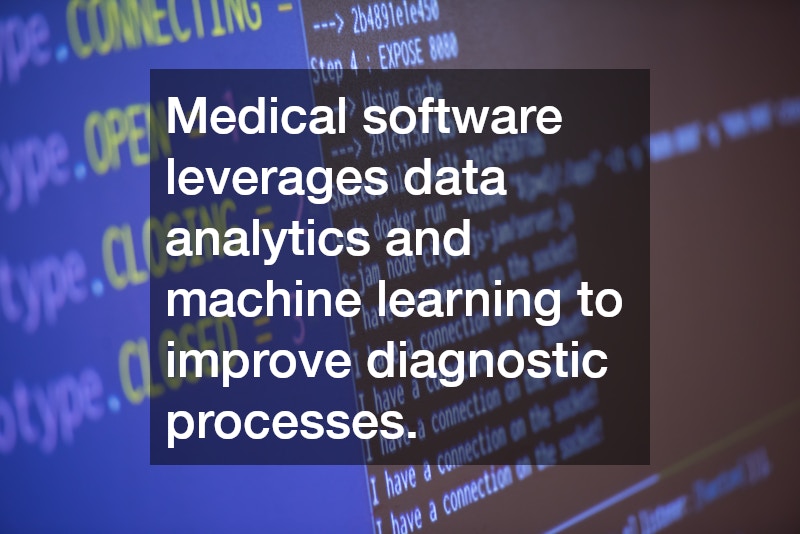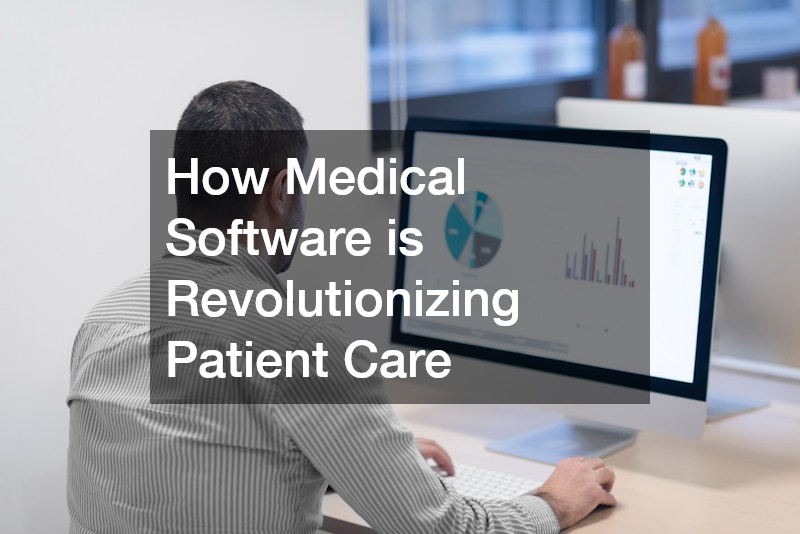In the contemporary landscape of healthcare, medical software is emerging as a transformative force. This article delves into how these technological advancements are revolutionizing patient care, providing insights into their influence on healthcare outcomes, operational efficiency, and patient engagement.
How Does Medical Software Improve Patient Diagnosis?
Enhancing Diagnostic Accuracy
Medical software leverages data analytics and machine learning to improve diagnostic processes. Algorithms analyze patient data, enabling practitioners to make informed decisions and detect anomalies more effectively.
By integrating vast amounts of medical data, software tools can identify patterns and markers that might elude traditional diagnostic methods. This not only speeds up the diagnostic process but significantly enhances accuracy, reducing the probability of misdiagnosis.
Medical software often incorporates artificial intelligence, which continuously learns from new data, further refining the diagnostic process. This ability to learn and adapt is crucial as medical databases grow exponentially, and patient needs become more complex.
Integrating Imaging and Test Results
Advanced medical imaging software allows seamless integration of test results and imagery, facilitating comprehensive analysis and interpretation, which enhances diagnostic precision and efficiency. These systems provide healthcare professionals with holistic patient views, ensuring all variables are considered in diagnosis.
With integrated imaging, software supports both 2D and 3D imagery, offering clinicians a deeper insight into patient conditions. By combining test results with imaging data, the software empowers healthcare providers to pinpoint issues that might require more prompt intervention.
Furthermore, this integration supports better collaboration among medical teams, who can access shared patient data and imagery. Consequently, decision-making is founded on the most comprehensive data available, improving patient outcomes and reducing unnecessary treatments.
What Role Does Medical Software Play in Patient Management?
Streamlining Clinical Workflows
Practice management systems automate routine tasks such as scheduling, billing, and documentation, enabling healthcare providers to focus more on patient care and improve overall workflow efficiency. These systems provide real-time updates and notifications which aid in minimizing administrative delays.
By employing these tools, healthcare facilities sustain uninterrupted operations, aligning resources accurately with patient needs. This reduces patient waiting times and optimizes clinician schedules for more dynamic service delivery.
One significant advantage of streamlining workflows is the enhanced capacity for healthcare professionals to engage directly with patients. Improved workflow efficiency allows for quality interactions that significantly contribute to improved health outcomes.
Empowering Patient Portals
Patient management software includes portals that empower patients to access their medical records, schedule appointments, and consult healthcare providers, thereby improving healthcare accessibility and patient engagement. These portals foster transparency, helping patients feel more involved in their healthcare journey.
With patient portals, individuals can track their treatment progression, understanding the reasoning behind medical decisions. This enhances patient confidence and educational engagement, allowing for better health literacy and overall satisfaction.
Moreover, portals contribute to more collaborative doctor-patient relationships. By facilitating ongoing communication, they allow issues to be addressed swiftly, encouraging proactive treatment and maintenance of health conditions.
How is Medical Software Enhancing Remote Healthcare Solutions?
Facilitating Telehealth and Virtual Consultations
Telehealth platforms have become pivotal during pandemics and beyond, allowing patients to consult doctors remotely. Medical software ensures these platforms are secure, user-friendly, and capable of delivering high-quality care.
Such platforms have widened healthcare access, especially in rural and underserved regions, by circumventing geographical barriers. This democratization of healthcare is essential as populations continue to grow and diversify across global locations.
The use of telehealth has shown a reduction in no-show appointment rates and has improved adherence to treatment plans. Patients enjoy greater convenience, and providers witness increased appointment attendance, offering a win-win for all parties involved.
Monitoring with Wearable Technology
Integration with wearable technology allows continuous monitoring of patient health metrics, providing doctors with real-time data to make proactive healthcare decisions for better patient outcomes. This ensures vital signs and patient behaviors are consistently tracked, identifying any irregularities instantly.
The use of wearables represents a shift towards personalized medicine, tailoring healthcare strategies to individual circumstances and needs. Patients gain autonomy over their health, while physicians access more precise, continuous health-related information.
Wearables also empower patients to take preventative actions by providing insights into lifestyle choices and their impacts on health. This proactive approach is integral in cultivating long-term wellbeing and extending life expectancy.
The revolution in patient care brought about by medical software is just beginning. As these technologies continue to evolve, they hold the promise of even more profound improvements in patient outcomes, operational efficiency, and the overall healthcare experience. Staying abreast of these trends is vital for all stakeholders in the healthcare industry.



